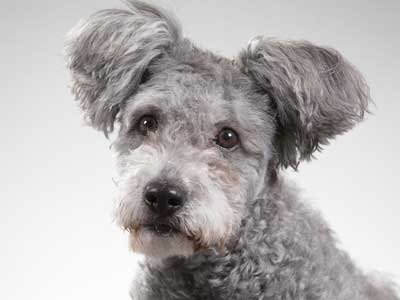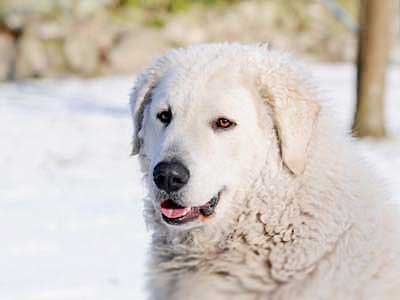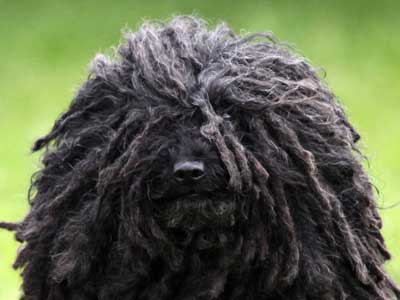Mudi
Breed Information |
|
|---|---|
| Popularity |
2022: #150 2021: # 2020: # 2019: # 2018: # 2017: # 2016: # 2015: # |
| Name | Mudi |
| Other names | Hungarian Mudi, Canis Ovilis Fenyesi |
| Origin |  Hungary Hungary |
| Breed Group | Herding |
| Size | Medium |
| Type | Purebred |
| Life span | 12-14 years |
| Temperament |
Alert Courageous Energetic Gentle Intelligent Lively Loving |
| Height | 15-19 inches (38-48 cm) |
| Weight | 18-29 pounds (8-13 kg) |
| Colors |
Black Brown Fawn Gray Merle White |
| Litter Size | 5-8 puppies |
| Puppy Prices |
Average $2000 - $2500 USD
|
Breed Characteristics |
|
|---|---|
| Adaptability |
5 stars |
| Apartment Friendly |
3 stars The Mudi can live in an apartment if it is sufficiently exercised; however, it needs space to run and play and would do better if not kept in one. This breed is moderately active indoors and will do best with at least a large yard. This breed can live outdoors. |
| Barking Tendencies |
5 stars Frequent |
| Cat Friendly |
3 stars |
| Child Friendly |
4 stars Good with Kids: This is a suitable breed for kids and is known to be playful, energetic, and affectionate around them. |
| Dog Friendly |
3 stars |
| Exercise Needs |
4 stars The Mudi is a very active breed. It needs to be taken on a daily, long, brisk walk or jog, where the dog is made to heel beside or behind the human holding the leash, as in a dogs eyes, the pack leader leads the way. In addition, your dog will benefit from a large, safe area where it can run free. Mudik need a lot of running and other exercises to be in good condition. They love to play and will excel in all kinds of sports such as Flyball and Frisbee. |
| Grooming |
2 stars Low Maintenance: Infrequent grooming is required to maintain upkeep. No trimming or stripping needed. |
| Health Issues |
2 stars Hypoallergenic: NoThis is a fairly healthy breed, although some cases of hip dysplasia have occurred, but not many. |
| Intelligence |
3 stars Ranking: (N/A) Full Ranking List |
| Playfulness |
5 stars |
| Shedding Level |
3 stars Moderate Shedding: Routine brushing will help. Be prepared to vacuum often! |
| Stranger Friendly |
3 stars |
| Trainability |
4 stars Moderately Easy Training: The Mudi is average when it comes to training. Results will come gradually. |
| Watchdog Ability |
3 stars |
Mudi Names |
||
|---|---|---|
| Rank | Boy Names | Girl Names |
| 01 | Buddy | Chloe |
| 02 | Tucker | Bella |
| 03 | Toby | Coco |
| 04 | Jack | Luna |
| 05 | Louie | Abbie |
| 06 | Tucker | Ellie |
| 07 | Bentley | Lola |
| 08 | Oscar | Stella |
| 09 | Riley | Maggie |
| 10 | Bailey | Penny |
| 100 Cute Puppy Names › | ||
Overview |
|---|
|
The Mudi is a medium-sized herding dog with spitz-like qualities. It has a wedge-shaped head, prick ears, moderate bone and a compact body with a sloping topline. The face and front of the legs are covered with short, smooth hair, while the rest of the coat is somewhat longer and very wavy to curly. The Mudi comes in a variety of different colors. The Mudi is a versatile farm dog that can hunt, exterminate rodents, and act as a capable herding dog and flock guardian. They are great for alerting and protecting their home and family. They have a high pitched bark and can be very loud and barky. There are 3 herding dogs native to Hungary the Puli, Pumi and Mudi, having similar characteristics. The mudi is a clever, keen, active, dog very very attached to its owner and family. They learn quick both good things and bad. The Mudi may be aloof with strangers and early socialization is recommended. |
History |
|
The Mudi has probably been in existence since the 18th Century, but the exact time is difficult to pinpoint due to the confusion in the different names of the herding dogs that were used in Hungary. While it is commonly believed that the Puli is the oldest of the Hungarian sheep herding breeds, and that the Pumi and the Mudi were derived from that breed, that may not be the case. It is possible that the Mudi, with its many ancient features, is the result of crosses between spitz-type dogs and other naturally occurring herding dogs of the time and region. The breed’s history is not precisely known. The Mudi was only officially recognized as a breed in 1936. |
References
- [1] ^ YouTube: Mudi - Top 10 Facts
- [2] ^ FCI: MUDI Breed Standard





